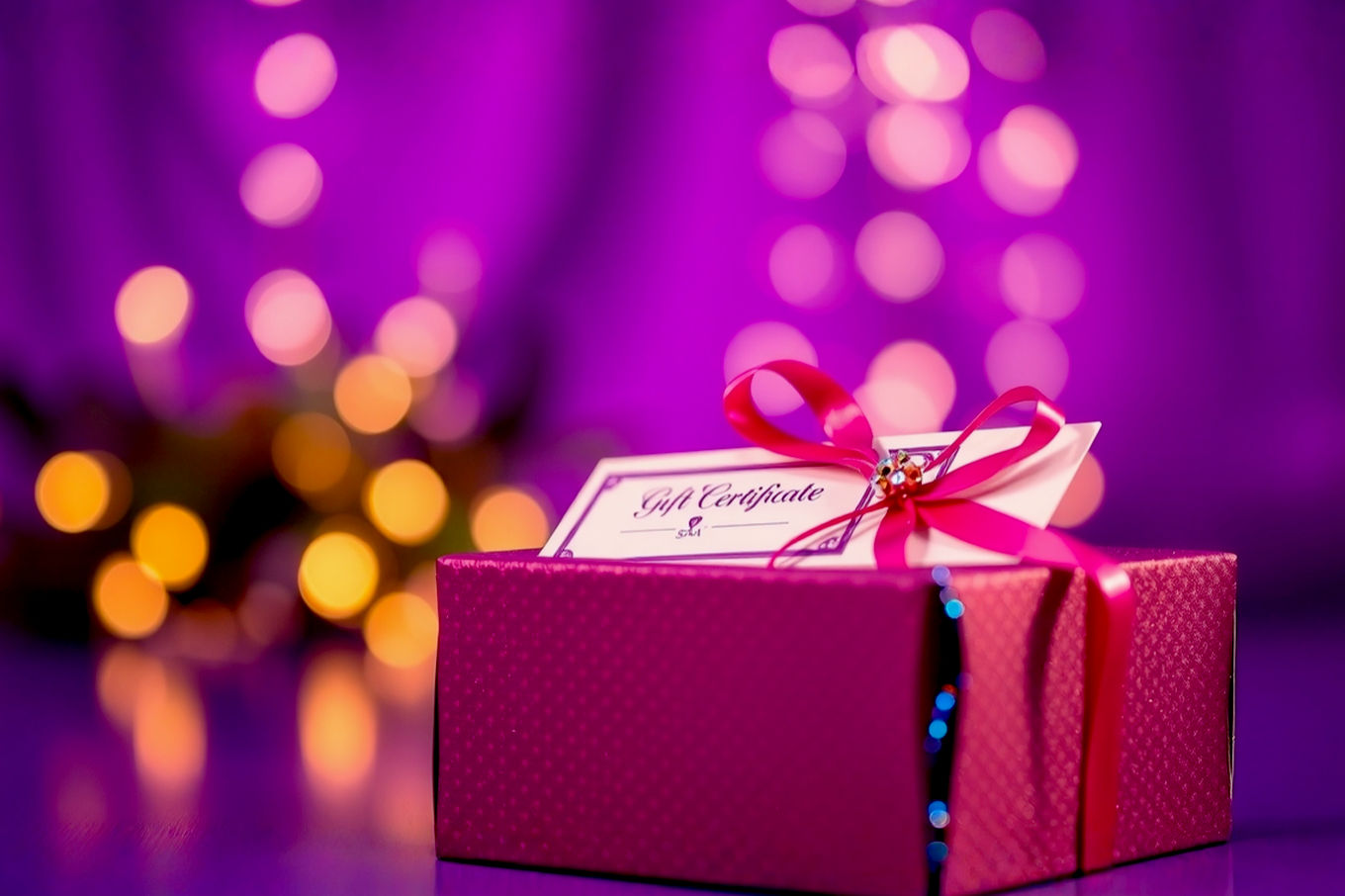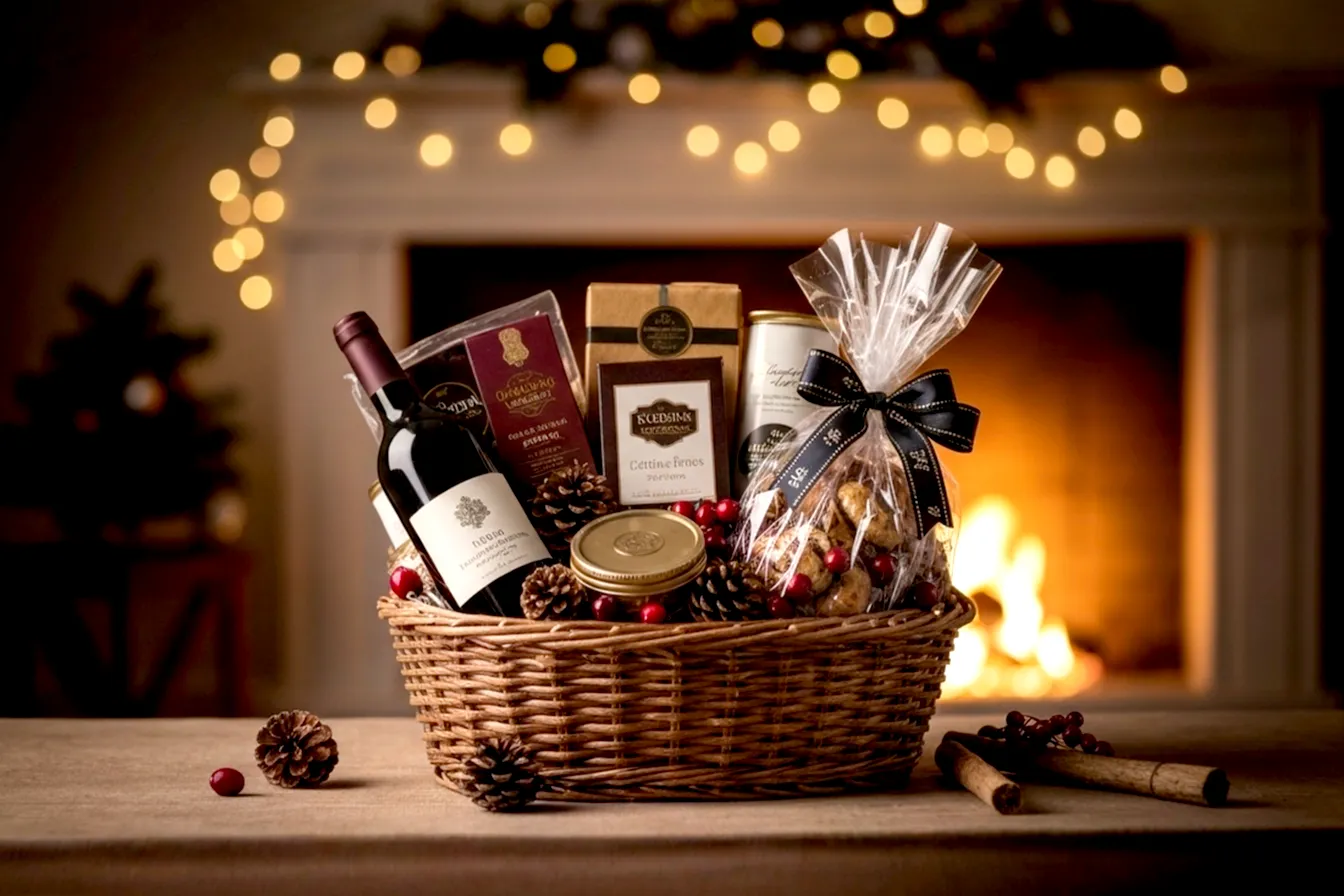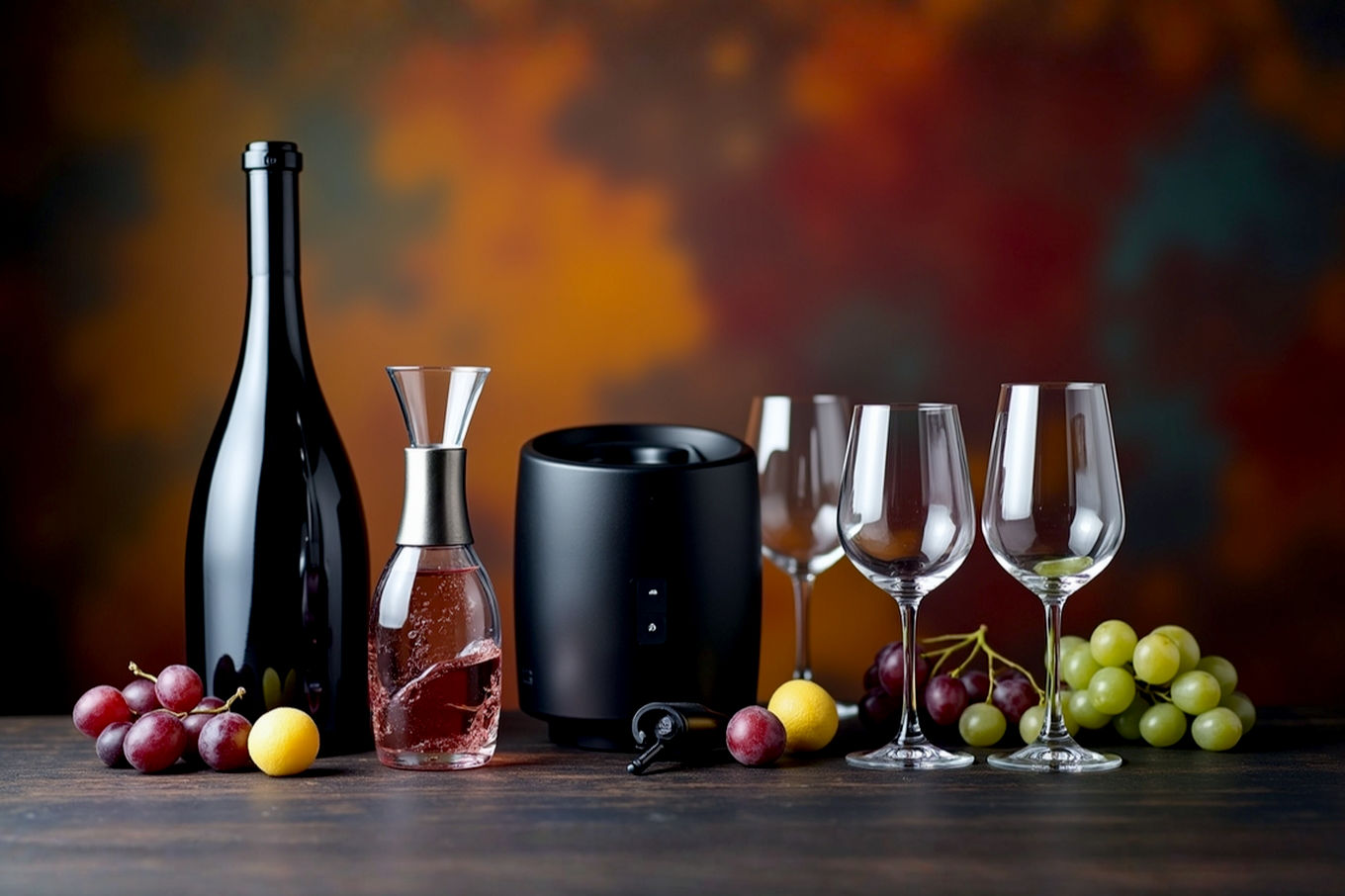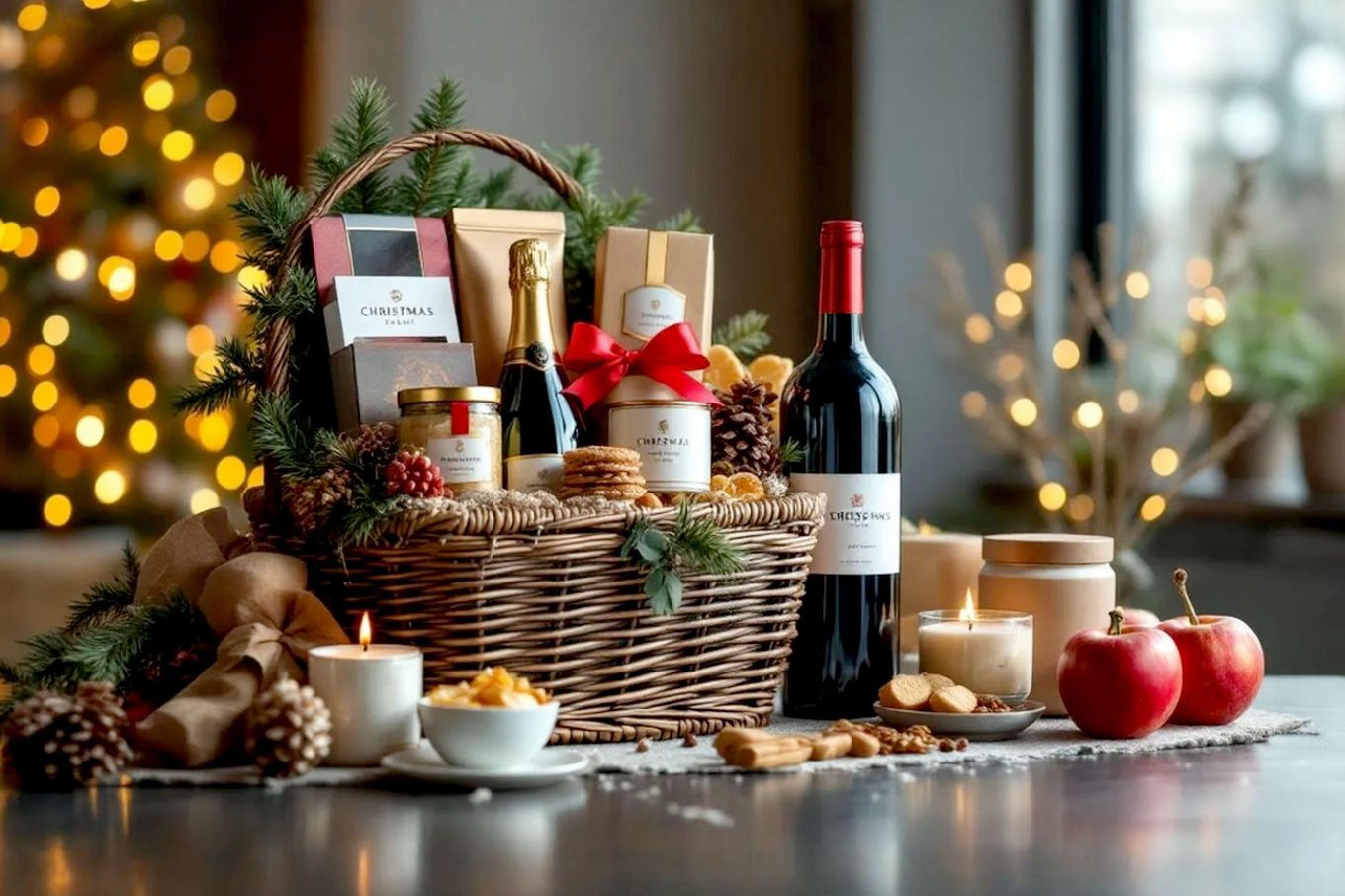This post may contain affiliate links. If you make a purchase through these links, we may earn a commission at no additional cost to you.
The holiday season brings with it a special kind of magic, a time for warmth, celebration, and thoughtful gestures. Among the many traditions, gifting and entertaining often take center stage. When you’re looking for a present that’s both elegant and deeply personal, or a centerpiece for your own festive gathering, a Christmas wine and cheese basket stands out. It’s a timeless choice, offering a sophisticated blend of flavors and textures that can be customized to suit any taste.
This guide will walk you through everything you need to know about creating these delightful holiday gifts, from understanding the fundamental principles of pairing to assembling a beautiful and memorable basket. We’ll explore the nuances of wine and cheese pairings for Christmas, ensuring your festive offerings are nothing short of spectacular.
The Art of Pairing: Understanding Wine and Cheese Fundamentals
Creating a truly exceptional wine and cheese basket starts with understanding the basic principles that make these two culinary delights sing in harmony. It’s more than just putting a bottle and a block of cheese together; it’s about creating a symphony of flavors.
The Basics of Wine and Cheese Harmony
Why do wine and cheese go so well together? It’s a question that has puzzled and delighted food lovers for centuries. The magic lies in their ability to complement each other’s characteristics, enhancing the overall tasting experience. Think about it: wine brings acidity, sweetness, tannins, and alcohol, while cheese offers fat, salt, texture, and a wide range of aromatic compounds. When paired correctly, they can balance, contrast, or amplify these elements.
One core principle is complementary flavors. For instance, a rich, creamy cheese can be cut by the acidity of a crisp white wine, preventing the cheese from feeling too heavy. Conversely, the fat in cheese can soften the harshness of tannins in a bold red wine, making both more enjoyable. This interplay is what makes wine cheese harmony so fascinating.
There are a few key guidelines that often steer successful pairings:
- “Like with Like” (Similarity): This approach suggests pairing wines and cheeses that share similar flavor profiles or intensities. A delicate, fresh cheese often pairs beautifully with a light, crisp wine. For example, a mild goat cheese and a zesty Sauvignon Blanc both have bright, acidic notes that align perfectly.
- “Opposites Attract” (Contrast): Sometimes, the best pairings come from contrasting elements. The classic example is a salty blue cheese with a sweet dessert wine. The sweetness of the wine balances the intense saltiness and pungency of the cheese, creating a rich, complex experience that neither could achieve alone. This principle highlights how different characteristics can elevate each other.
- “Regional Pairings”: This is a time-honored tradition. Wines and cheeses that originate from the same region often evolve together, developing complementary characteristics due to shared terroir, climate, and culinary traditions. Think of French Brie with a local Champagne, or Italian Parmesan with a Sangiovese from Tuscany. This approach often leads to inherently harmonious wine and cheese pairings.
Understanding these basic principles is the first step in mastering the art of creating perfect wine and cheese pairings.
Decoding Cheese Types for Pairing
To pair effectively, you need to know your cheese. Cheeses are incredibly diverse, and their characteristics—from texture to flavor intensity—play a crucial role in how they interact with wine. Here’s a breakdown of common types of cheese for wine pairing and their general guidelines.
Fresh & Soft Cheeses
These cheeses are typically young, unaged, and have a high moisture content. They often have a mild, milky, or tangy flavor and a creamy, spreadable texture.
- Examples: Chevre (goat cheese), Mozzarella, Burrata, Feta, Ricotta, Brie, Camembert.
- Characteristics: Light, often tangy or milky, spreadable, delicate. Brie and Camembert, while soft, can develop more earthy, mushroomy notes as they ripen.
- Pairing Guidelines: These cheeses generally call for lighter wines that won’t overpower their delicate flavors.
- Fresh Cheeses (Chevre, Mozzarella, Feta): Crisp, high-acid white wines are ideal. Think Sauvignon Blanc (its herbaceous notes complement goat cheese beautifully), Pinot Grigio, or Albariño. Light-bodied sparkling wines like Prosecco or Cava also work well, as their bubbles cut through the creaminess.
- Soft-Ripened Cheeses (Brie, Camembert): These often pair wonderfully with Champagne or other dry sparkling wines, as the effervescence and acidity cut through the richness. Light-bodied red wines like Pinot Noir or Gamay (Beaujolais) can also be excellent choices, especially with riper, earthier versions of Brie. The fruitiness of these reds complements the cheese without overwhelming it.
Semi-Hard Cheeses
These cheeses have less moisture than soft cheeses and are aged for a few months to a year, resulting in a firmer texture and more developed flavors.
- Examples: Gouda, Cheddar (mild to medium), Gruyère, Emmental, Provolone, Havarti.
- Characteristics: Nutty, buttery, sometimes sweet or slightly sharp. Textures range from supple to firm.
- Pairing Guidelines: These versatile cheeses can handle a wider range of wines.
- Gouda (Young to Medium-Aged): A versatile cheese that pairs well with Chardonnay (oaked or unoaked), Merlot, or even a lighter Pinot Noir. The nutty notes of Gouda often find a friend in wines with a bit of complexity.
- Cheddar (Mild to Medium): A classic pairing for Cabernet Sauvignon or Merlot, especially for sharper versions. The tannins in these reds can be softened by the fat in the cheddar. For milder cheddar, a Sauvignon Blanc or even a dry Riesling can work.
- Gruyère: Its nutty, slightly sweet flavor is a fantastic match for Pinot Noir, dry Riesling, or even a crisp Champagne.
Hard & Aged Cheeses
These are firm, low-moisture cheeses, often aged for a year or more. They develop intense, complex, savory (umami) flavors and a crumbly or granular texture.
- Examples: Parmesan (Parmigiano-Reggiano), Pecorino Romano, Aged Cheddar, Manchego (aged), Comté.
- Characteristics: Intense, savory, nutty, often salty, granular texture.
- Pairing Guidelines: These robust cheeses demand wines with structure and intensity.
- Parmesan/Pecorino: The salty, umami richness of these cheeses is a perfect foil for bold red wines like Chianti, Sangiovese, or Nebbiolo. The high acidity and tannins in these Italian reds cut through the richness. Sparkling wines, particularly a dry Franciacorta or Champagne, can also be surprisingly good, as their acidity and effervescence cleanse the palate.
- Aged Cheddar: This cheese’s sharpness and complexity are well-matched by full-bodied red wines such as Cabernet Sauvignon, Zinfandel, or Syrah/Shiraz. A rich, oaked Chardonnay can also stand up to its intensity.
Blue Cheeses
Distinctive for their blue or green mold veins, these cheeses are known for their pungent aroma and strong, often salty, sharp, and creamy flavors.
- Examples: Roquefort, Gorgonzola, Stilton, Danish Blue.
- Characteristics: Pungent, salty, earthy, spicy, creamy.
- Pairing Guidelines: The intensity of blue cheese requires equally bold wines, often sweet ones.
- Classic Pairing: Sweet dessert wines like Port (especially Tawny Port), Sauternes, Ice Wine, or Late Harvest Riesling. The sweetness provides a beautiful counterpoint to the cheese’s saltiness and pungency, creating a harmonious balance.
- Alternative: Some adventurous pairings include full-bodied Cabernet Sauvignon or Zinfandel for a contrasting experience, though sweet wines are generally preferred.
Exploring Wine Categories for Pairing
Just as cheese has its categories, so does wine. Understanding the general characteristics of different wine types will help you make informed pairing decisions for your Christmas wine and cheese basket.
Sparkling Wines
These wines are characterized by their effervescence, or bubbles, which come from carbon dioxide produced during fermentation.
- Examples: Champagne, Prosecco, Cava, Crémant.
- Characteristics: High acidity, often crisp and refreshing, ranging from bone-dry (Brut Nature) to sweet (Doux). The bubbles cleanse the palate.
- Pairing Guidelines: Sparkling wines are incredibly versatile, acting as a palate cleanser. They pair beautifully with creamy, soft cheeses like Brie and Camembert, as their acidity cuts through the richness. They also work surprisingly well with salty cheeses like Feta or even some hard, nutty cheeses like Gruyère. Their festive nature makes them perfect for holiday baskets.
Light-Bodied White Wines
These wines are typically low in alcohol and tannins, offering bright, refreshing flavors.
- Examples: Sauvignon Blanc, Pinot Grigio/Gris, Albariño, Vinho Verde.
- Characteristics: High acidity, crisp, often with citrus, green apple, or herbaceous notes.
- Pairing Guidelines: Ideal for fresh and mild cheeses like Chevre, Mozzarella, or young Feta. The acidity complements the tanginess of goat cheese and cuts through the creaminess of fresh cow’s milk cheeses. They can also work with some semi-hard, milder cheeses like Havarti.
Full-Bodied White Wines
These wines have more weight and richness on the palate, often due to oak aging or specific grape varietals.
- Examples: Oaked Chardonnay, Viognier, Marsanne, Roussanne.
- Characteristics: Rich, creamy texture, often with notes of butter, vanilla, tropical fruit, or stone fruit. Lower acidity than light-bodied whites.
- Pairing Guidelines: Best suited for richer, semi-hard cheeses like Gruyère, aged Gouda, or even some medium-aged Cheddars. The wine’s body can stand up to the cheese’s intensity without being overwhelmed. An oaked Chardonnay, for example, can beautifully complement the nutty, caramel notes of a well-aged Gouda.
Light-Bodied Red Wines
These reds are characterized by lower tannins and brighter fruit flavors, often served slightly chilled.
- Examples: Pinot Noir, Gamay (Beaujolais), Grenache (lighter styles).
- Characteristics: Red fruit notes (cherry, raspberry), earthy undertones, smooth tannins, high acidity.
- Pairing Guidelines: Excellent with soft-ripened cheeses like Brie or Camembert, especially when they’re ripe and earthy. Their fruitiness also makes them a good match for semi-hard cheeses like Gruyère or young Cheddar, and even some mild goat cheeses. The lower tannin content means they won’t clash with delicate cheese flavors.
Medium-Bodied Red Wines
These wines strike a balance between fruit, acidity, and tannin, offering more structure than light-bodied reds.
- Examples: Merlot, Sangiovese (Chianti), Tempranillo, Zinfandel (lighter styles).
- Characteristics: Red and black fruit notes, sometimes with savory or spicy undertones, moderate tannins.
- Pairing Guidelines: Versatile with a range of semi-hard to hard cheeses. They pair well with Cheddar, Gouda, and Manchego. The tannins are present enough to cut through the fat of the cheese, while the fruit character complements savory notes. A classic Chianti with Parmesan is a prime example of a successful regional pairing.
Full-Bodied Red Wines
These are the most robust reds, with high tannin levels, concentrated fruit, and often oak influence.
- Examples: Cabernet Sauvignon, Syrah/Shiraz, Malbec, Bordeaux blends.
- Characteristics: Dark fruit flavors (blackberry, cassis), often with notes of spice, tobacco, or leather, firm tannins, high alcohol.
- Pairing Guidelines: Best reserved for hard, aged, and intensely flavored cheeses like aged Cheddar, Parmesan, or mature Gouda. The tannins in these wines are softened by the fat in the cheese, creating a smoother, more integrated flavor. They can also work with some blue cheeses for a bold contrast, though sweet wines are more traditional here.
Sweet & Dessert Wines
These wines have significant residual sugar, ranging from moderately sweet to lusciously rich.
- Examples: Port, Sauternes, Ice Wine, Late Harvest Riesling, Moscato d’Asti.
- Characteristics: Concentrated fruit flavors, often with notes of honey, dried fruit, or botrytis (noble rot).
- Pairing Guidelines: The quintessential match for blue cheeses like Stilton or Roquefort. The sweetness of the wine beautifully balances the saltiness and pungency of the cheese. Lighter, sweeter wines like Moscato d’Asti can also pair with fresh, creamy cheeses or even some fruit-infused cheeses.
Crafting Festive Christmas Pairings: Specific Combinations
With a foundational understanding of wine and cheese types, let’s dive into some specific Christmas wine and cheese pairings that will make your holiday baskets truly shine. These combinations range from beloved classics to exciting new discoveries, perfect for any festive gathering or thoughtful gift.
Classic Christmas Pairings
Some pairings are classics for a reason: they consistently deliver a delightful experience, especially during the holidays.
Cheddar & Cabernet Sauvignon
This is a robust and satisfying pairing, perfect for the hearty flavors of winter.
- Why it works: Cheddar, especially a sharp or aged variety, is known for its firm texture, nutty notes, and a tangy, sometimes crumbly, character. The fat and intensity of the cheese are a perfect foil for the bold, tannic structure of Cabernet Sauvignon. The wine’s dark fruit flavors (like blackcurrant or plum) and often savory notes (cedar, tobacco) are beautifully complemented by the cheese’s sharpness. The tannins in the Cabernet are softened by the cheese’s fat, making the wine feel smoother and more approachable.
- Variations: For a milder cheddar, you might opt for a Merlot or a less tannic Bordeaux blend. If you have an extra-sharp, crumbly aged cheddar, a powerful Zinfandel or Syrah/Shiraz could also be an excellent match, offering a fruit-forward counterpoint to the cheese’s intensity.
Brie & Champagne/Sparkling Wine
This pairing epitomizes elegance and celebration, making it ideal for a festive Christmas wine and cheese basket.
- Why it works: Brie, with its creamy, buttery texture and often earthy, mushroomy notes (especially when ripe), finds its perfect partner in Champagne or other dry sparkling wines. The effervescence and high acidity of the sparkling wine cut through the richness of the Brie, cleansing the palate with each sip and preparing it for the next bite. The subtle yeasty or brioche notes often found in traditional method sparkling wines also complement the creamy, savory aspects of the cheese.
- Variations: Any good quality dry sparkling wine will work, from Prosecco (Brut) to Cava (Brut) or Crémant. For a truly luxurious basket, a vintage Champagne would be a splendid choice. If you prefer a red wine with Brie, a light-bodied Pinot Noir can also be surprisingly good, especially with a riper Brie, as its red fruit and earthy notes align well with the cheese.
Stilton & Port
The quintessential holiday wine cheese pairing, this combination is a must-have for any festive spread.
- Why it works: Stilton is a rich, creamy, and intensely flavored blue cheese with a distinct pungency and salty kick. Port, particularly a sweet Tawny or Ruby Port, provides the perfect counterpoint. The luscious sweetness of the Port balances the saltiness and sharpness of the Stilton, while its rich, often nutty or dried fruit flavors harmonize with the cheese’s complex profile. This pairing creates a decadent, warming sensation that is synonymous with Christmas.
- Technical Explanation: The high sugar content in Port (a fortified wine, meaning brandy is added to stop fermentation and retain sweetness) directly counteracts the strong, often bitter compounds found in blue cheeses like Stilton, which are produced by the molds (e.g., Penicillium roqueforti). This balance of sweet and savory, combined with the creamy texture of the cheese and the viscous body of the Port, creates a truly harmonious experience.
- Variations: While Port is traditional, other sweet dessert wines like Sauternes (a noble rot wine from Bordeaux) or a Late Harvest Riesling can also pair beautifully with Stilton, offering different aromatic profiles but the same sweet-savory balance.
Unexpected & Adventurous Combinations
For those looking to explore beyond the traditional, these unique wine and cheese pairings offer exciting new flavor experiences.
Goat Cheese & Sauvignon Blanc (or Light-Bodied Reds)
A vibrant and refreshing pairing that highlights acidity and freshness.
- Why it works: Fresh goat cheese (Chevre) is characterized by its bright acidity, tangy flavor, and often a subtle “goaty” or earthy note. Sauvignon Blanc from regions like the Loire Valley (Sancerre, Pouilly-Fumé) or New Zealand (Marlborough) shares this high acidity and often presents herbaceous, citrus, or grassy notes. These similar characteristics create a synergistic effect, with the wine’s crispness cutting through the cheese’s creaminess and its green notes complementing the cheese’s freshness.
- Alternative Red Pairing: For an adventurous pairing, try a light-bodied red like a young Beaujolais (Gamay). Its bright red fruit and minimal tannins can surprisingly complement the tang of goat cheese, especially if the cheese is served with a touch of honey or fruit.
Gouda & Oaked Chardonnay (or Merlot)
A pairing that showcases richness and nutty complexity.
- Why it works: Gouda, particularly a medium-aged version, offers a delightful balance of nutty, caramel-like sweetness and a firm yet yielding texture. An oaked Chardonnay brings its own richness, often with notes of butter, vanilla, and toasted nuts, which resonate beautifully with the Gouda’s profile. The wine’s body stands up to the cheese’s substance without overwhelming it.
- Red Alternative: A soft, fruit-forward Merlot can also be an excellent choice. Its plum and cherry notes, combined with softer tannins, complement the Gouda’s sweetness and nuttiness without clashing.
Gruyère & Pinot Noir (or Dry Riesling)
A sophisticated pairing that balances savory and aromatic notes.
- Why it works: Gruyère is a classic Swiss cheese known for its complex nutty, earthy, and sometimes slightly fruity flavor, with a firm, dense texture. Pinot Noir, with its delicate red fruit (cherry, raspberry), earthy undertones (mushroom, forest floor), and bright acidity, mirrors many of Gruyère’s aromatic compounds. The wine’s elegance doesn’t overpower the cheese, allowing both to shine.
- White Alternative: A dry Riesling is another fantastic choice. Its vibrant acidity and often mineral, citrus, or green apple notes provide a refreshing contrast to the Gruyère’s richness, highlighting its nutty aspects.
Regional Christmas Delights
Embracing the “regional pairing” principle can lead to truly authentic and delicious wine and cheese combinations. These pairings celebrate the culinary heritage of specific areas, offering a taste of tradition.
French-Inspired Pairings
France, a mecca for both wine and cheese, offers countless harmonious pairings.
- Comté & Vin Jaune: This is a classic from the Jura region. Comté is a firm, nutty, and savory Alpine cheese, often aged for extended periods. Vin Jaune, a unique oxidative white wine from Jura, has a distinctive nutty, curry-like, and apple-skin flavor profile. The wine’s robust, savory character and acidity perfectly match the intensity and complexity of the Comté, creating a profound and memorable experience. The technical aspect here is the flor yeast in Vin Jaune, which creates a layer on the wine, protecting it from excessive oxidation while imparting unique nutty and savory notes, similar to Fino Sherry.
- Roquefort & Sauternes: A truly luxurious pairing. Roquefort is a potent, salty, and creamy blue cheese made from sheep’s milk. Sauternes is a sweet, botrytized white wine from Bordeaux, known for its luscious notes of honey, apricot, and citrus marmalade. The intense sweetness of the Sauternes beautifully counteracts the salt and pungency of the Roquefort, creating a rich, balanced, and utterly decadent experience. This is a quintessential example of the “opposites attract” principle.
Italian-Inspired Pairings
Italy offers a rich tapestry of wines and cheeses, often designed to complement each other.
- Parmesan & Chianti: A rustic yet refined pairing. Parmigiano-Reggiano (often simply called Parmesan) is a hard, granular, intensely savory, and salty cheese with a pronounced umami flavor. Chianti, a medium-bodied red wine primarily made from Sangiovese grapes, is known for its high acidity, firm tannins, and notes of sour cherry, plum, and earthy undertones. The acidity and tannins of the Chianti cut through the richness and saltiness of the Parmesan, while the wine’s fruit and savory notes complement the cheese’s depth.
- Gorgonzola & Moscato d’Asti: An intriguing sweet-savory combination. Gorgonzola is a creamy, pungent blue cheese (either Dolce, which is milder and sweeter, or Piccante, which is firmer and sharper). Moscato d’Asti is a light, sweet, and fizzy white wine with low alcohol, bursting with notes of peach, apricot, and orange blossom. The gentle sweetness and effervescence of the Moscato d’Asti provide a delightful contrast to the Gorgonzola’s intensity, especially the milder Dolce variety, creating a refreshing and harmonious pairing.
British-Inspired Pairings
The UK, particularly England, has a rich tradition of cheese-making, with some excellent local wine pairings.
- Mature Cheddar & English Sparkling Wine: A modern classic. Mature Cheddar, with its sharp, complex, and often nutty flavor, is a staple. English Sparkling Wine, especially those made in the traditional method from Chardonnay, Pinot Noir, and Pinot Meunier, offers crisp acidity, fine bubbles, and often notes of green apple and brioche. The sparkling wine’s acidity and effervescence beautifully cut through the richness of the cheddar, while its complexity stands up to the cheese’s depth. This is a fantastic way to showcase local produce in a Christmas wine and cheese basket.
- Wensleydale & Cranberry with Port: A festive twist on a traditional cheese. Wensleydale is a crumbly, mild, and slightly tangy cheese. When infused with cranberries, it becomes particularly festive. Pairing this with a Ruby Port or a fruit-forward Late Bottled Vintage Port works wonderfully. The Port’s dark fruit and sweet notes complement the cranberries, while its body provides a nice contrast to the cheese’s crumbly texture.
Beyond the Basics: Enhancing Your Christmas Basket
A Christmas wine and cheese basket is more than just wine and cheese. The accompanying items, thoughtful presentation, and personal touches elevate it from a simple gift to a truly memorable experience.
Complementary Accoutrements
These additions not only enhance the flavor profiles of your wine and cheese but also add visual appeal and textural variety to your gourmet Christmas basket.
Crackers & Breads
The right vehicle for your cheese is crucial.
- Types: Include a variety of textures and flavors.
- Water Crackers: Neutral, thin, and crisp, they allow the cheese and wine flavors to dominate.
- Artisanal Bread: A small, crusty baguette or sourdough loaf can be a lovely addition, especially for softer cheeses.
- Fruit & Nut Crisps: These add a touch of sweetness and crunch, often with complementary flavors like fig, cranberry, or rosemary, which pair well with many cheeses.
- Gluten-Free Options: Consider including a small pack of gluten-free crackers to cater to potential dietary needs.
Fruits
Fresh and dried fruits offer sweetness, acidity, and visual appeal.
- Fresh:
- Grapes: A classic for a reason. Their sweetness and juiciness provide a refreshing counterpoint to rich cheeses. Red and green varieties add color.
- Figs: Fresh figs are luxurious and pair wonderfully with blue cheeses, Brie, and goat cheese.
- Berries: Raspberries, blackberries, or cranberries can add a tart, fresh note and vibrant color.
- Dried:
- Apricots: Their concentrated sweetness and chewiness are excellent with nutty cheeses like Gouda or Gruyère.
- Cranberries: A festive choice, especially with milder cheeses or those with a hint of sweetness.
- Dates: Rich and sweet, perfect with aged cheeses or blue cheeses.
Nuts
Nuts add crunch and a savory depth.
- Varieties: Candied pecans, walnuts, almonds, or Marcona almonds.
- Pairing: Their earthy and sometimes sweet notes complement a wide range of cheeses, from creamy Brie to sharp Cheddar. Candied nuts add an extra layer of sweetness that can work well with blue cheeses or even sparkling wines.
Spreads & Preserves
These add an extra layer of flavor and moisture.
- Fig Jam/Preserves: A universally beloved pairing for many cheeses, especially Brie, goat cheese, and blue cheeses. Its sweetness and slight earthiness are a perfect match.
- Quince Paste (Membrillo): A firm, sweet, and tangy jelly-like preserve that is a traditional pairing for Manchego and other firm, nutty cheeses.
- Honey: A drizzle of local honey can elevate almost any cheese, particularly soft-ripened and blue cheeses, by adding a touch of natural sweetness.
- Chutneys: Savory-sweet chutneys (like apple or cranberry chutney) can provide a lovely contrast to sharp or aged cheeses.
Cured Meats (Optional)
If you’re aiming for a more substantial charcuterie-style basket, cured meats are a fantastic addition.
- Examples: Prosciutto, salami (mild or spicy), chorizo.
- Pairing: These salty, savory meats pair well with many of the same wines as the cheeses, especially medium-bodied reds.
Olives & Pickles
Adding a briny, tangy element can cleanse the palate and add complexity.
- Varieties: Marinated olives (Kalamata, Castelvetrano), cornichons (small pickled cucumbers).
- Pairing: Their acidity and saltiness provide a refreshing contrast to rich cheeses and can complement both red and white wines.
Presentation Matters: Assembling Your Basket
The visual appeal of your Christmas wine and cheese basket is almost as important as its contents. Thoughtful assembly transforms it into a truly impressive gift.
Choosing the Right Basket or Container
- Traditional Baskets: Woven wicker or willow baskets are classic and charming. Look for ones with sturdy handles.
- Alternative Containers: Consider wooden crates, decorative tins, rustic galvanized buckets, or even stylish reusable tote bags for a more modern feel. The container itself can be part of the gift.
- Size: Ensure the container is large enough to comfortably hold all your chosen items without looking cramped, but not so large that the contents appear sparse.
Lining and Filler Materials
These protect the contents and create a visually appealing base.
- Shredded Paper: Crinkled paper shred (natural kraft, festive red, or green) is an excellent filler. It cushions items and adds volume.
- Fabric: A festive tea towel, a small linen napkin, or a piece of burlap can be used to line the basket, adding a touch of elegance and serving a practical purpose later.
- Cellophane: A large sheet of clear cellophane is essential for wrapping the finished basket, protecting its contents and giving it a professional, polished look.
Arrangement Techniques
The way you arrange items impacts the overall aesthetic.
- Layering: Start with taller items (wine bottles) at the back or center. Build layers around them with larger cheese blocks, then smaller items like spreads, crackers, and fruits.
- Visual Balance: Distribute colors and textures evenly. Avoid grouping all the same-colored items together. Use different shapes and sizes to create interest.
- Accessibility: Arrange items so they are visible and easy to access. You want the recipient to see all the wonderful treats inside.
- Secure Placement: Use filler material to prevent items from shifting during transport. You can also use double-sided tape or small pieces of ribbon to secure items if needed.
Adding Decorative Elements
These are the final touches that make the basket feel truly special and festive.
- Ribbons: Choose wide, luxurious ribbons in Christmas colors (red, green, gold, silver) or natural tones (burlap, twine). Tie a large bow around the handle or the top of the cellophane wrap.
- Tags: Attach a beautifully designed gift tag with a handwritten message.
- Ornaments: Tuck in a small, festive ornament or a sprig of artificial holly or pine for a touch of holiday cheer.
- Cheese Knives/Corkscrew: Include a small set of cheese knives or a high-quality corkscrew as a practical and thoughtful addition.
Personal Touches and Themes
Making your basket unique shows you put extra thought into the gift.
Themed Baskets
- “Italian Christmas”: Feature Italian wines (Chianti, Prosecco), Italian cheeses (Parmesan, Gorgonzola, Pecorino), and Italian accoutrements (prosciutto, olives, fig jam).
- “Sparkling Celebration”: Focus on Champagne or other sparkling wines, paired with creamy Brie, fresh goat cheese, and perhaps some fruit crisps and a small box of gourmet chocolates.
- “Winter Warmer”: Include a robust red wine (Cabernet Sauvignon, Zinfandel), an aged cheddar, a blue cheese, and rich accompaniments like spiced nuts, fig jam, and dark chocolate.
Adding Personalized Notes or Small, Related Gifts
- Handwritten Note: A heartfelt message explaining why you chose these specific items or wishing them a happy holiday makes the gift truly personal.
- Small Gifts: A set of elegant cheese markers, a small cutting board, or a beautiful wine stopper can be lovely additions that enhance the overall gift.
Considering Dietary Restrictions
- Gluten-Free: Include a selection of certified gluten-free crackers.
- Non-Dairy: While challenging for cheese, you could include a small, high-quality non-dairy cheese alternative if you know the recipient’s preference, or focus more on the wine and other accoutrements.
- Nut Allergies: Clearly label items containing nuts or avoid them entirely if unsure.
Gifting and Enjoying Your Christmas Creation
Once your beautiful Christmas wine and cheese basket is assembled, the final steps involve ensuring it’s the perfect gift for your recipient and offering tips for enjoying its contents.
Selecting the Perfect Basket for Your Recipient
Choosing the right combination of wine and cheese is key to a successful gift.
Considering Their Preferences
- Red vs. White: Does your recipient prefer red wine, white wine, or are they open to anything? If you know their preference, lean into it. If not, a versatile sparkling wine or a balanced medium-bodied red is a safe bet.
- Strong vs. Mild Cheese: Some people love pungent blue cheeses, while others prefer mild, creamy varieties. Tailor your cheese selection to their known tastes. If unsure, include a mix of mild, medium, and perhaps one bolder option.
- Sweet vs. Dry: For wine, consider if they prefer drier wines or enjoy a touch of sweetness. This impacts choices like Riesling or Port.
- Knowledge Level: If they’re a wine and cheese connoisseur, you might opt for more unusual or high-end selections. For a casual enthusiast, focus on approachable yet high-quality options.
Budget Considerations
Christmas gift basket ideas can range from budget-friendly to truly luxurious.
- Entry-Level: You can create a lovely basket with good quality, accessible wines and cheeses. Focus on classic, crowd-pleasing pairings like a decent Merlot with a medium cheddar, or a Prosecco with a creamy Brie, along with basic crackers and a jam.
- Mid-Range: This allows for more artisanal cheeses, slightly higher-end wines (e.g., a reputable Pinot Noir, a good Champagne), and a wider variety of gourmet accoutrements like specialty crackers, high-quality preserves, and premium nuts.
- Luxury: For a truly indulgent gift, select premium, aged cheeses (e.g., a 24-month aged Parmigiano-Reggiano, a fine Stilton), prestigious wines (e.g., vintage Champagne, a Grand Cru Burgundy, a high-end Port), and exquisite gourmet additions like truffle honey, rare fruit pastes, and artisanal charcuterie.
Occasion
- Hostess Gift: A smaller, elegant basket with a sparkling wine and a soft cheese is perfect for a holiday party host.
- Family Gift: A larger, more diverse basket with multiple wine and cheese options, plus plenty of accoutrements, is great for a family to share.
- Corporate Gift: Opt for a sophisticated, universally appealing basket that is well-presented and includes classic, non-controversial pairings.
Storage and Serving Tips
To ensure the contents of your holiday wine cheese gifts are enjoyed at their best, provide some simple storage and serving instructions.
Optimal Storage Conditions for Wine and Cheese
- Wine: Store wine bottles on their side in a cool, dark place with consistent temperature (ideally 50-55°F or 10-13°C) and moderate humidity. Avoid extreme temperature fluctuations.
- Cheese: Most cheeses should be stored in the refrigerator, ideally wrapped in cheese paper or parchment paper (not plastic wrap, which can suffocate the cheese and impart plastic flavors). Harder cheeses will last longer than soft, fresh ones. Blue cheeses should be stored separately to prevent their strong aromas from affecting other foods.
Serving Temperatures for Different Wines and Cheeses
- Wine:
- Sparkling Wines: Serve well-chilled, around 45-50°F (7-10°C).
- White Wines (Light-Bodied): Serve chilled, around 45-50°F (7-10°C).
- White Wines (Full-Bodied/Oaked): Serve slightly chilled, around 50-55°F (10-13°C).
- Red Wines (Light-Bodied): Serve slightly chilled, around 55-60°F (13-16°C).
- Red Wines (Medium to Full-Bodied): Serve at “cellar temperature,” around 60-65°F (16-18°C). Avoid serving reds too warm, as it can make them taste alcoholic and flabby.
- Sweet/Dessert Wines: Serve chilled, around 45-50°F (7-10°C).
- Cheese: Always serve cheese at room temperature. This is a crucial detail often overlooked. Cold cheese loses much of its flavor and aroma.
- Pre-serving Preparation: Remove cheeses from the refrigerator at least 30-60 minutes before serving. For very hard, aged cheeses, an hour or more might be beneficial. This allows the fats to soften, releasing their full range of complex flavors and aromas.
Hosting a Christmas Wine and Cheese Tasting
If the basket is for your own holiday entertaining, a structured tasting can be a fun and engaging activity.
Setting the Scene
- Decor: Festive decorations, soft lighting, and perhaps some holiday music create a warm and inviting atmosphere.
- Serving Board: Arrange cheeses and accoutrements beautifully on a large wooden board or slate platter.
- Glassware: Provide appropriate wine glasses for each type of wine (e.g., flutes for sparkling, white wine glasses for whites, larger bowls for reds).
- Cheese Knives: A variety of cheese knives for different cheese textures (soft, hard, crumbly) is helpful.
- Water: Offer plenty of plain water to cleanse the palate between tastings.
Guidance on Tasting
- Order of Tasting: Generally, move from lighter-bodied wines to fuller-bodied, and from milder cheeses to stronger ones. This prevents stronger flavors from overwhelming more delicate ones.
- Start with fresh/soft cheeses and sparkling/light white wines.
- Move to semi-hard cheeses with medium-bodied whites or light reds.
- Progress to hard/aged cheeses with full-bodied reds.
- Finish with blue cheeses and sweet dessert wines.
- How to Taste: Encourage guests to first taste the cheese, then the wine, and then the cheese again, noticing how the flavors evolve and interact.
Encouraging Discussion and Enjoyment
- Flavor Notes: Provide small cards or labels for each cheese and wine, listing their names and perhaps a few tasting notes.
- Interactive Experience: Encourage guests to share their thoughts on the pairings, what they like, and what surprises them. This turns a simple snack into an educational and social event, making your wine and cheese party ideas a hit.
Conclusion
Crafting a Christmas wine and cheese basket is a delightful endeavor that combines culinary artistry with thoughtful gifting. By understanding the fundamental principles of wine and cheese pairings, exploring specific festive combinations, and paying attention to the details of presentation and complementary accoutrements, you can create a gift that truly stands out. Whether you’re assembling a luxurious present for a loved one or preparing an elegant spread for your own holiday gathering, a well-curated wine and cheese selection offers a sophisticated and memorable experience. These holiday wine cheese gifts are more than just food and drink; they are an invitation to savor the season, share joy, and create lasting memories. So, uncork a bottle, cut a slice of your favorite cheese, and celebrate the festive spirit with perfect pairings!






